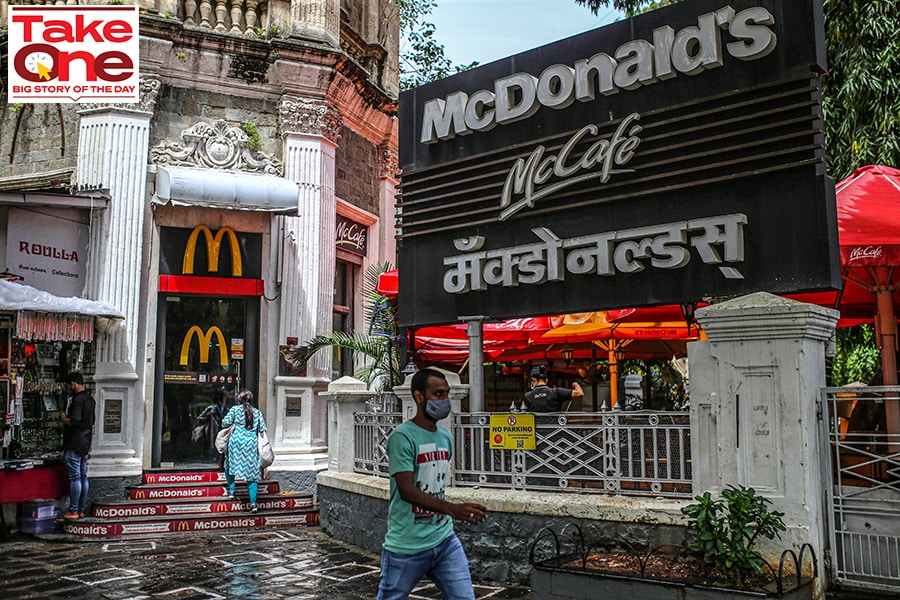
McDonald's weathers Covid storm, rakes in highest quarterly sales
Twenty-five years after launch in India, QSR chain builds on omni-channel strategy and digital for future growth
 During the last quarter, Hardcastle Restaurants, the master franchisee of McDonald's restaurants in west and south India, opened eight outlets, taking the total number to 316 across 44 cities
During the last quarter, Hardcastle Restaurants, the master franchisee of McDonald's restaurants in west and south India, opened eight outlets, taking the total number to 316 across 44 cities
Image: Dhiraj Singh/Bloomberg via Getty Images
When Amit Jatia, vice chairman of Westlife Development Ltd, opened the first franchise of McDonald’s, in Mumbai’s Bandra, on October 21, 1996, the QSR (quick service restaurant) ecosystem in the country was undercooked. Neither the supply chain nor quality processing existed, and most of the agricultural produce was for home consumption. “Like Maruti helped build the entire ecosystem for the automotive industry, we helped kickstart the QSR ecosystem,” says Jatia, whose company owns Hardcastle Restaurants, the master franchisee of McDonald’s restaurants in west and south India.
As it completes its 25-year journey in India, the company has held on strong, recording its highest ever revenue of Rs 476.83 crore in the quarter ending December 2021, a year-on-year jump of 46 percent. It also clocked an Ebitda of Rs 83.62 crore, with a year-on-year rise of 61 percent, and an all-time high PAT (profit after tax) of Rs 20.82 crore. During the period, McDonald’s opened eight new outlets, taking the total to 316 across 44 cities.
“At a time, when two tranches of the quarter, the beginning of October and the end of December, were under some sort of Covid restrictions, we recorded the highest ever sales and highest ever profit,” says Jatia. “It shows how we’ve emerged stronger through Covid, despite facing a battering in the very first wave.”
In the early days of the pandemic, through the April-June quarter of 2020, McDonald’s recorded sales of less than Rs 100 crore, as opposed to the usual Rs 400-odd crore. “We had a lot of write-offs, since food had a limited shelf life and there was no consumption,” Jatia adds. In the second wave, too, business was weak, with deliveries offering the only silver lining.








